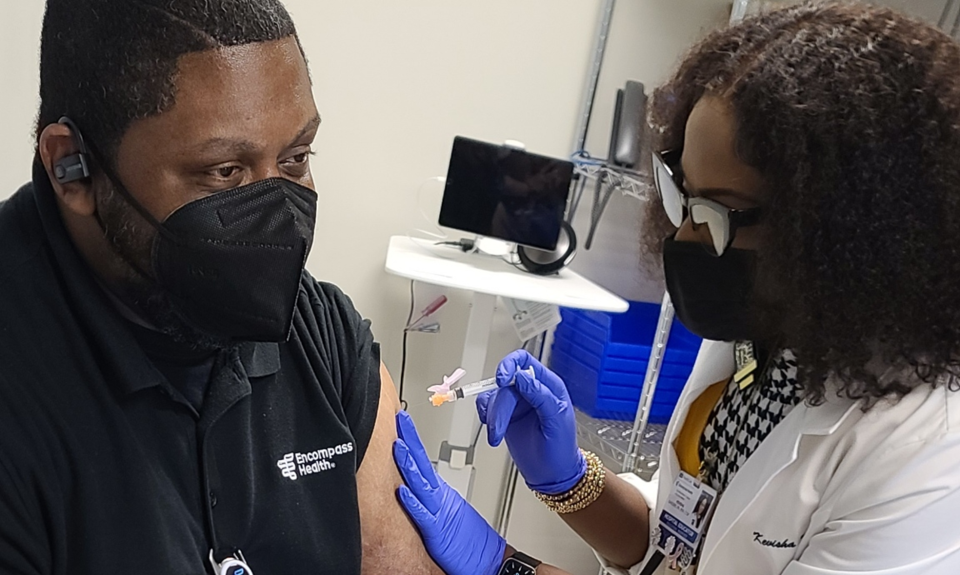Most of us know that the flu vaccine is the best way to protect against influenza and its potentially serious complications. But did you know that certain racial and ethnic minorities, including Black, Hispanic and American Indian and Alaska Native (AI/AN) people, experience more severe flu outcomes and have lower rates of flu vaccination? As a hospital educator and infection preventionist, I’ve witnessed this health inequity firsthand on my mission to raise the flu vaccination rate at The Rehabilitation Institute of Southern Illinois. I’ve since made it my mission to improve our minority vaccination rate, and I’ve learned some valuable lessons along the way.
More Severe Minority Outcomes
According to the CDC, Black, Hispanic and AI/AN people have consistently higher rates of severe flu outcomes, including hospitalization and ICU admission. From 2009 to 2019, age-adjusted flu hospitalization rates were nearly two times higher among Black persons, 1.3 times higher among AI/AN persons and 1.2 times higher among Hispanic or Latino persons compared to white people. Flu-related ICU admissions were 1.7 times higher among Black persons, 1.4 times higher among AI/AN persons, and 1.1 times higher among Hispanic or Latino persons compared to white people in that same period. Patients in our inpatient rehabilitation hospital tend to be older, which puts them in an even greater risk category.
Lower Minority Vaccination Rates
The CDC also reports that flu vaccination coverage is consistently lower among Black, Hispanic and AI/AN people. During the 2021–2022 season, flu vaccination coverage was 54% among white adults, 54% among Asian adults, 42% among Black adults, 41% among AI/AN adults and 38% among Hispanic adults.
Many factors contribute to disparities in flu vaccination. Some examples include lack of access to healthcare and insurance, underlying medical conditions, distrust of medical institutions and misinformation. Racism and prejudice are also known to worsen inequalities.
Moving the Needle
Ensuring our patients and staff members are informed about and have access to the flu vaccine is one of my basic job responsibilities. I initially believed that setting up a flu vaccination clinic with balloons and candy would do the trick, but the response wasn’t what I’d hoped for—particularly with our minority staff members and patients. I learned that moving the needle takes time, persistence and understanding. Below are a few tips for making progress.
- Listen. When I took the time to speak with patients and employees on an individual basis and listen to their concerns, I gained a deeper understanding of their decision-making.
- Reserve judgment. in line with Encompass Health’s core value of “leading with empathy,” I validated their feelings.
- Connect. As a Black woman, my ability to connect from an ethnic/cultural background was helpful. However, even if that’s not the case for you, it’s always possible to connect on some level, such as uncovering shared interests.
- Educate. I started “Infection Friday” at our hospital, which consists of a staff huddle to discuss different infection control-related topics, including flu vaccination. Sometimes I speak, but I also invite other employees to speak, such as pharmacy and nutrition staff members. These meetings have gone over well, and I’ve witnessed more staff members stepping up to get involved.
- Start early. I’ve formed a partnership with a local high school’s career technical department in which juniors and seniors who are working toward certified nursing assistant certifications can intern with our hospital. I’ve also spoken to students about infection prevention-related topics, including vaccination. I’m hopeful these experiences will have a long-term impact on these students and help shape their future decision-making.
- Most importantly, don’t give up! If you have a heart to serve your patients and employees, they will pick up on that and be more receptive to your advice. Even if you just plant a seed, you can continue to water that seed and eventually hope for a change.
References:
Centers for Disease Control and Prevention. (2022, October 18). Health equity and flu. Health Equity and Flu | CDC
The content of this site is for informational purposes only and should not be taken as professional medical advice. Always seek the advice of your physician or other qualified healthcare provider with any questions you may have regarding any medical conditions or treatments.



